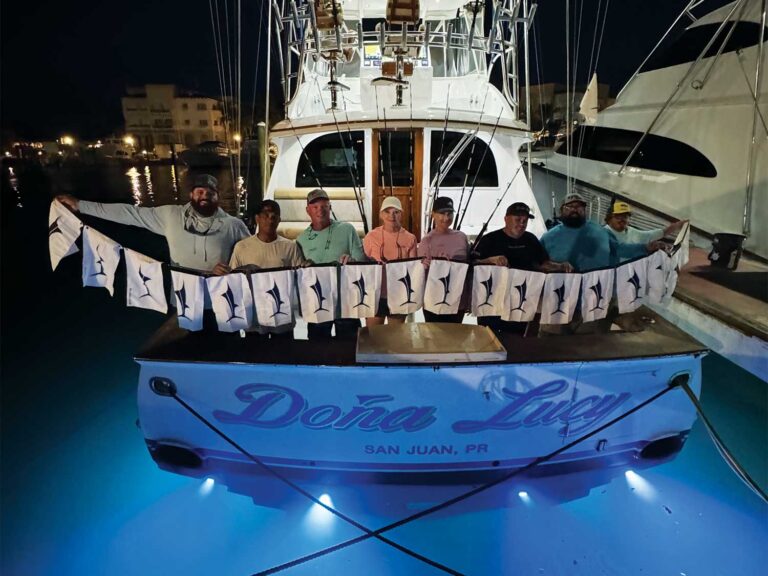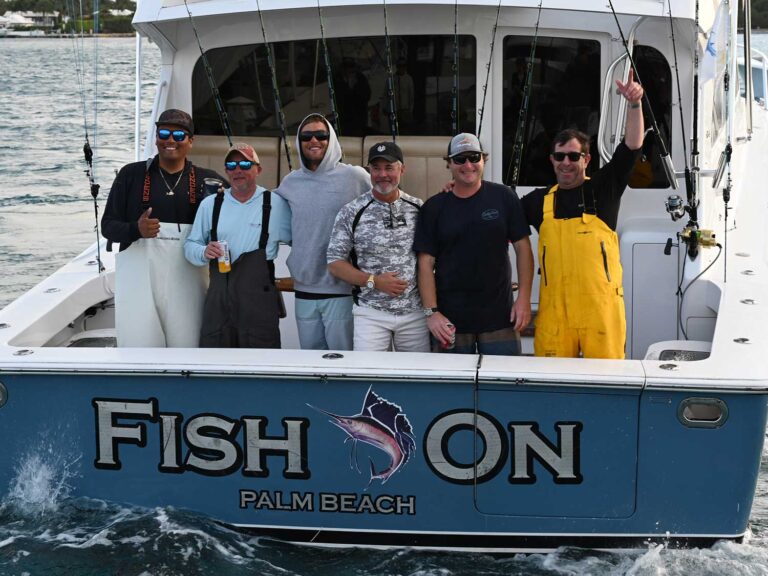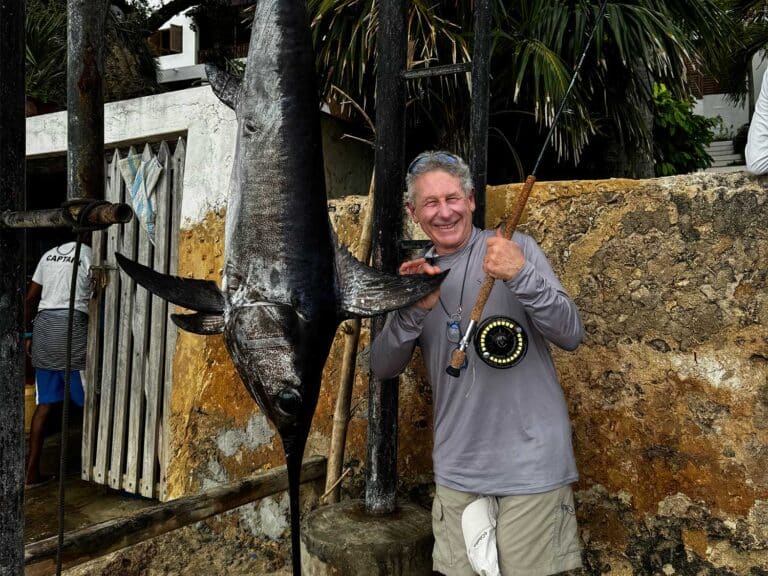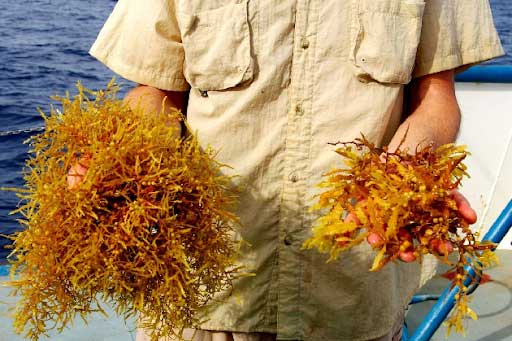
Sargassum: We have a love/hate relationship with the stuff. It can be a welcome sight offshore, but once it makes its way closer to land, socking in the marinas or cutting off bays, beaches or any other coastal area, it’s a spreading, stinking decay of mess that has us scratching our heads and stomping our feet as we desperately search for answers.
The floating algae has a purpose, of course; it has a unique role in the biosphere as a source of food and shelter for multitudes of marine life. It’s the same crucial habitat that provides safety to baby fish and other marine wildlife, which within weeks can kill all it was harboring in one fell swoop.
Nature is a set of checks and balances, and although we may not completely understand why Mother Nature does what she does, there is a method to her madness. It’s her world – we’re just living in it.
Understand the Science
Pelagic Sargassum is actually two species of floating marine algae (Sargassum natans and Sargassum fluitans) that flourishes in the thin surface layer of tropical waters. Originally coming from the Sargasso Sea, which is an area within the North Atlantic Gyre, Sargassum has found a new haven in the Tropical North Atlantic, where it is thriving.
Outside the Gyre, Sargassum presents itself first as thin weed lines, and then mats. Ocean currents, eddies and winds eventually consolidate the mats into huge patches, some as large as 300 feet across and 10 feet deep. This highly organized community of brown algae provides habitat for much marine life, but it can also harbor invasive species, or worse yet, it accumulates so quickly that it becomes insidious, especially to shallow-water ecosystems.
When these Sargassum super-mats make their way into nearshore areas where it’s not supposed to be, the density and sheer massiveness will compete with the surroundings, ultimately choking out the sunlight and sucking up every available nutrient. As the food sources diminish, the densely-packed seaweed begins to die, creating a stinking, festering environmental disaster that not only kills the very marine life it’s designed to support, but severely impacts the coastal environment it infested, making itself the invasive species.
Invasive Damage
As the decay progresses, Sargassum gives off a poisonous and potentially flammable gas — hydrogen sulfide — which is harmful to humans, machinery and coastal fauna. Unfortunately, many coastal communities in the Caribbean have been impacted by this higher-than-normal influx of the algae and are desperately searching for answers to what some are calling an epidemic. Unfortunately for these communities, there seems to be no real solution.
Michael Grasso, owner of El Yunque Tours and Puerto Rico Bio Bay Tours, contacted Dr. Jim Franks of the University of Southern Mississippi’s Gulf Coast Research Laboratory to express his concern with the situation, which is reoccurring in Los Croabas, Puerto Rico. “In 2015, we faced an episode so bad the Sargassum created a dead zone which was toxic enough to cause a massive fish kill-off,” he says. Grasso also theorized events such as these eventually lead to the death of all living creatures in the affected area.
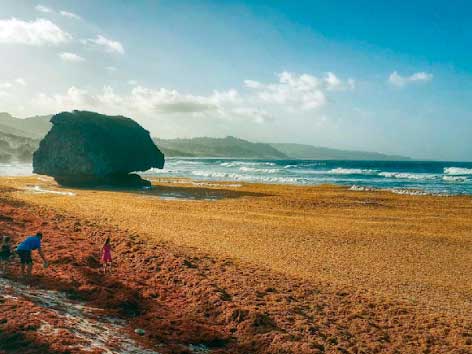
Grasso is just one of the many tour operators, beach resorts and marinas that are reaching out to scientists for answers. “Baby sea turtles have trouble crossing this wall of Sargassum on the beaches,” he says, “becoming trapped in the grass and more vulnerable to natural predators.” In addition to losing hundreds of baby sea turtles to the Sargassum troubles, nesting turtles are no longer able to reach the beaches they return to year after year to lay their eggs.
Dr. Franks confirms Grasso’s complaint and sympathizes, saying, “My colleagues and I have been working to better understand the magnitude and movements of the Sargassum in the Caribbean to better predict migrations and landfalls by assessing near-real-time satellite images obtained from the remote sensing lab at the University of South Florida, directed by Dr. Chuanmin Hu.”
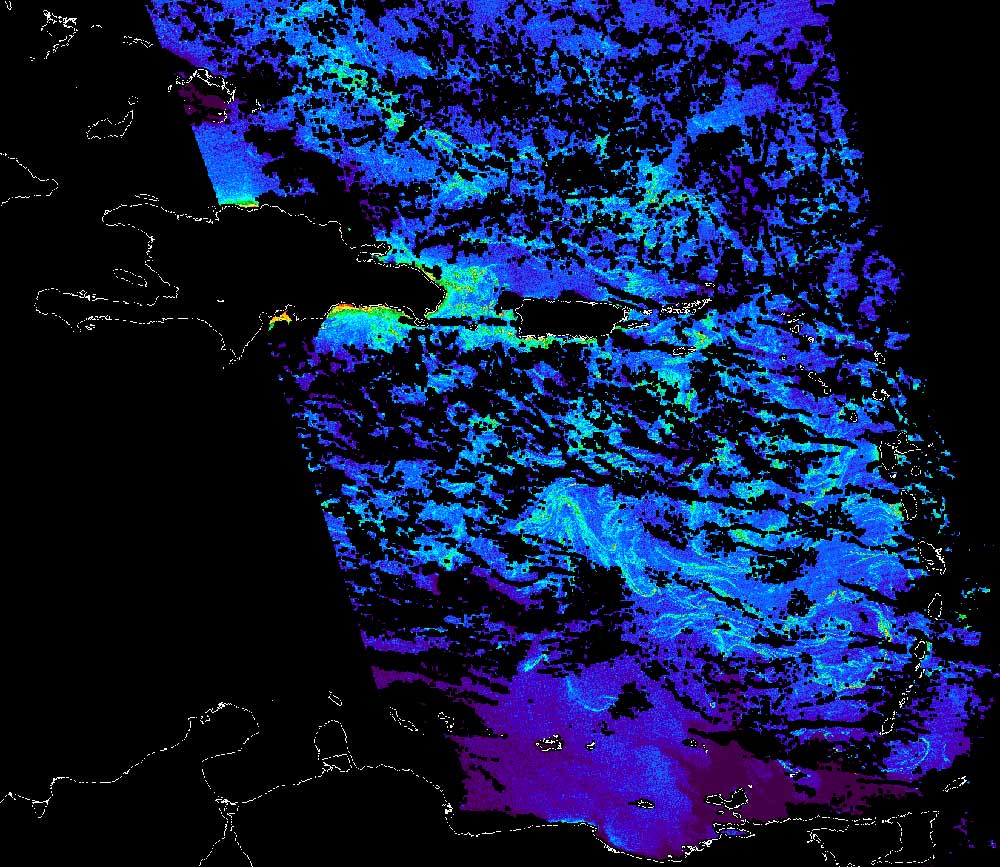
A Larger Problem
“Sargassum is sweeping into the Caribbean from a point farther south, near the equator and Brazil, heading toward the Caribbean and slowly moving westward toward Central America and Mexico,” he says. Although Franks admits it is fascinating work, he feels terribly sorry for the people and businesses in the path of this massive event.
The frequency of episodes like the ones in Puerto Rico are on the rise around the Caribbean. Dr. Franks points out, “The Sargassum continues to grow in the North Tropical Atlantic’s own circulation patterns, and the size of the problem dictates the difficulty of the solution, if there is one. We are trying to find ways to cope.” If anything is certain at this stage, it’s that a quick fix is not on the horizon; attempting to create one would most likely cause further damage to an already troubled ecosystem.
Unfortunately, it seems not much can be done to prevent these invasions from happening in the future, and the Caribbean is not alone; this epidemic is not a local one, and Franks admits, “It’s happening from Africa to northeast South America.
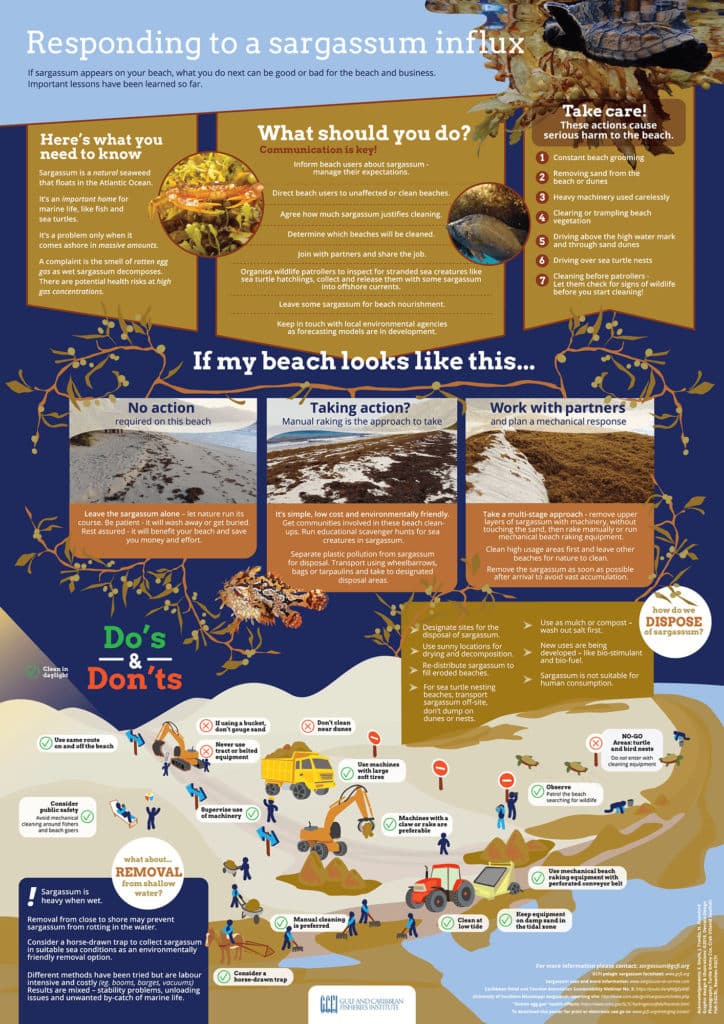
Anglers, tour operators and others can report Sargassum events to the Gulf Coast Research Lab’s website here.
To learn more about the satellite-based Sargassum Watch System, visit Dr. Hu’s Optical Oceanography Lab at the University of South Florida’s website.




